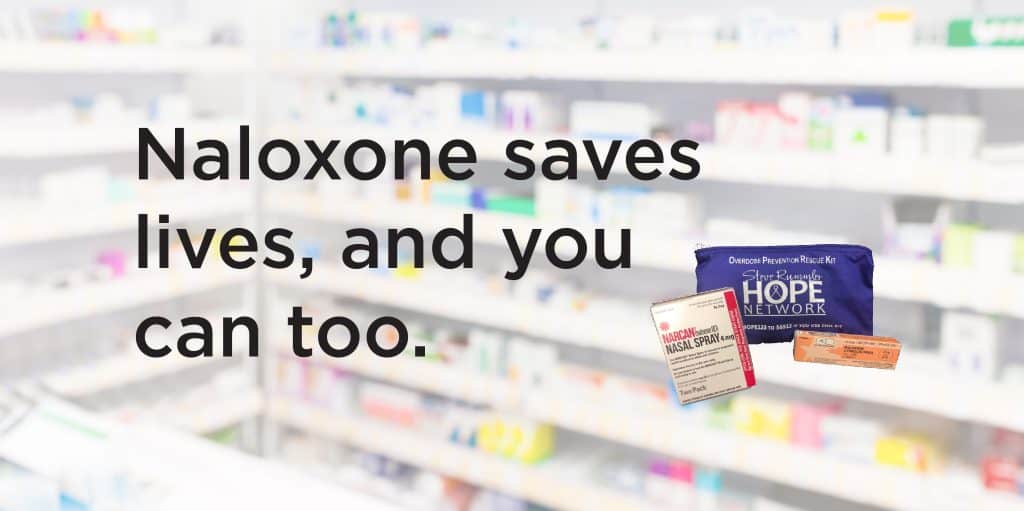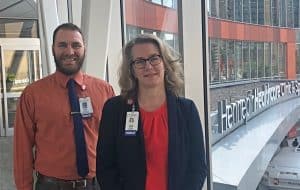Save a life from opioid overdose – get people breathing again!

The ongoing national opioid crisis has had a devastating effect on our communities and has changed the way our health system approaches treating pain. On average, 115 Americans die every day from an opioid overdose. The experts at Hennepin Healthcare are involved in a number of initiatives to help patients receive the care and pain medications they need, in a safe way. One of these initiatives is to provide access for patients and their caretakers to the life-saving medication naloxone. We are grateful to be ahead of the curve when it comes to the prevention and treatment of opioid overdose, thanks to our dedicated staff and initiatives that are helping save patients from death from overdose.
What is Naloxone?
Naloxone is the life-saving antidote for opioid overdose. People oftentimes refer to the medication by the brand name, Narcan®. Naloxone reverses the good and bad effects of opioids. When someone is overdosing on an opioid medication like Percocet®, oxycodone, or fentanyl, they will experience decreased breathing, unconsciousness, and potentially death. A person can be saved by administering naloxone. The effects of the opioid are reversed and they will start breathing again. The easiest way to administer naloxone outside of the medical setting is to spray it inside the nose, but a nonprofessional can also be trained to give it as an injection in the muscle.
The effects of naloxone
The first step in treating an opioid overdose is to call 911. Then naloxone should be given. The naloxone will wear off in 30-90 minutes so often the symptoms of the opioid overdose will often come back. It is a short-term treatment that needs to be immediately followed with medical care. When recovering from the overdose, the person will need to be monitored/observed in an emergency setting for several hours to make sure they do not need additional treatment. After a person has recovered, they are discharged and are oftentimes given a prescription for naloxone to bring home with them in case of future risk. Survivors of opioid overdose should be encouraged to seek treatment for their opioid use.
Who should have naloxone?
- Anyone who feels safer by having it
- Anyone who is on high doses of opioids
- Anyone who is on opioids in combination with certain sleeping pills and anxiety medications (benzodiazepines)
- Anyone who has overdosed on an opioid
- Anyone with an opioid use disorder, and their loved ones and caregivers
- Anyone who feels comfortable enough to be able to administer naloxone to someone in their community who is overdosing
Naloxone is available in all Hennepin Healthcare pharmacies.
For more in-depth information about naloxone, how it is used, and how you can obtain naloxone, visit: hennepinhealthcare.org/naloxone.
Thank you to our subject matter experts who contributed to this article and are dedicated to preventing overdose.
Our experts:

Laurie Willhite, PharmD, CSPI, Clinical Pharmacist, Interventional Pain Clinic
Kevin Olander, PharmD, Discharge Pharmacy Supervisor

